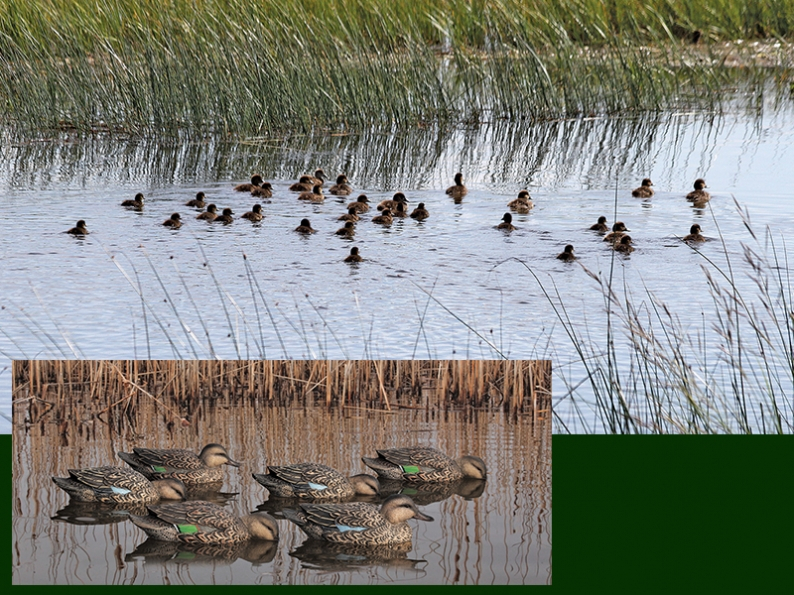
Duck Numbers Tallied from ND Game and Fish Reports
The North Dakota Game and Fish Department’s annual spring breeding duck survey conducted last May showed an index of 3.4 million birds, down 5 percent from last year. The spring migration was well ahead of normal as open fields and warm temperatures allowed early migrants to pass quickly through the state.
At that time, survey results indicated all species, except ruddy ducks (up 19 percent) and gadwall (up 4 percent), decreased from their 2015 estimates, while shovelers remained unchanged. Mallards were down 9 percent, pintails down 17 percent and canvasbacks down 18 percent. However all species, with the exception of pintails and canvasbacks, were above the long-term average (1948-2015).
In early spring, the number of temporary and seasonal wetlands was substantially lower than last year, with the spring water index down 50 percent. However, conditions coming out of May into June were much wetter. Frequent rains through the summer filled many wetlands that are beneficial for breeding ducks.
As a result, things have improved. For this fall, Game and Fish Department biologists expect a fall duck flight from North Dakota similar to last year, based on observations from the annual mid-July waterfowl production survey.
This year’s brood index came in at 3.89 broods per square mile, up 11 percent from last year. The statewide average since the survey began in the 1950s is 2.55 broods per square mile.
Observers also count water areas during the summer survey, and this year’s water index was 35 percent higher than last year. Because of abundant rains in many parts of North Dakota since late May, Game and Fish migratory game bird management supervisor Mike Szymanski said summer wetland conditions are improved over spring conditions.
“It was fairly dry when we did our spring survey, but after that we started to get some good rains that helped improve late nesting and renesting efforts,” Szymanski said. “Wetlands were drying up quickly last spring, but then the rains came. The heavy, often localized rainfall helped keep brood habitat on the map into late summer in many areas.”
Mallards, gadwall and blue-winged teal are the top three duck species that nest in North Dakota, and together they accounted for nearly 80 percent of the broods observed in the summer survey. Mallard brood numbers were up about 15 percent from last year, gadwalls were up about 28 percent, and blue-winged teal broods were down about 5 percent. Blue-winged teal are typically the most prevalent breeding duck in North Dakota.
The Game and Fish summer duck brood survey involves 18 routes that cover all sectors of the state except west and south of the Missouri River. Biologists count and classify duck broods and water areas within 220 yards on each side of the road.
The survey started in the late 1950s, and all routes used today have been in place since 1965. •